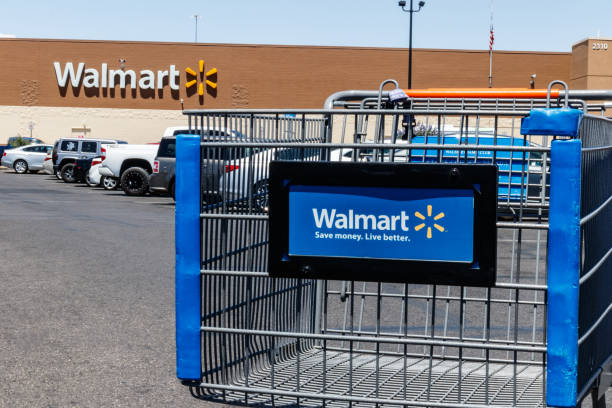In today’s competitive retail landscape, sales efficiency is critical for driving growth. According to McKinsey & Company, retailers that invest in integrated digital technologies experience up to a 30% increase in sales productivity. However, fragmented processes and poor visibility often hinder performance.
A leading retail ERP system integrates sales, inventory, and customer data, enabling retailers to streamline operations and improve the customer experience. Below are best practices to maximize sales efficiency using such systems.
Menu list
- Understanding the Role of ERP in Retail Sales
- Centralized Customer Data for Personalized Sales Experiences
- Real-Time Inventory Management to Prevent Stockouts and Overstock
- Streamlined Order Processing and Fulfillment
- Sales Analytics and Reporting for Data-Driven Decisions
- Mobile and Omnichannel Capabilities to Enhance Sales Flexibility
- Employee Training and Change Management for ERP Adoption
- Conclusion
Understanding the Role of ERP in Retail Sales
Retail ERP systems act as the central nervous system for retail businesses, integrating key functions like sales, inventory, procurement, finance, and customer service into one unified platform. This integration eliminates data silos and ensures all departments work in sync, improving coordination and overall operational efficiency.
By providing real-time visibility into sales and inventory, ERP systems empower retail teams to make faster, smarter decisions—whether adjusting stock, managing promotions, or optimizing workforce scheduling. With accurate and consistent data flowing seamlessly across the business, errors from manual processes are reduced, helping to speed up order fulfillment and enhance the customer experience.
Ultimately, a leading retail ERP system turns complex, disconnected processes into a streamlined operation, enabling retailers to be more agile, responsive, and competitive in today’s fast-paced market.
Centralized Customer Data for Personalized Sales Experiences
In today’s competitive retail environment, customers expect more than just products—they want personalized experiences that reflect their preferences and past interactions. A leading retail ERP system with integrated customer relationship management (CRM) capabilities brings all customer data into one centralized platform, creating a complete, 360-degree view of each shopper.
This unified customer profile allows retailers to tailor promotions, recommendations, and communications based on purchase history, browsing behavior, and loyalty program activity. By leveraging this deep insight, sales teams can deliver highly relevant offers and services that resonate with individual customers, boosting engagement and driving higher conversion rates.
Centralizing customer data not only improves marketing effectiveness but also enables better customer service. When store associates have immediate access to detailed customer information, they can provide personalized assistance that builds trust and loyalty, ultimately enhancing the overall shopping experience.
Real-Time Inventory Management to Prevent Stockouts and Overstock
Effective inventory management is critical for retail success. A leading retail ERP system offers real-time visibility into stock levels across all sales channels—whether in-store, online, or in warehouses. This immediate access to accurate inventory data helps retailers balance supply and demand efficiently.
By tracking product movement as it happens, the system alerts teams to low stock levels, preventing costly stockouts that disappoint customers and erode brand trust. At the same time, it helps avoid overstocking, which ties up capital and increases storage costs.
This dynamic inventory control empowers retailers to make smarter purchasing decisions, optimize replenishment cycles, and improve overall cash flow. Real-time data also supports omnichannel fulfillment strategies, ensuring customers receive their orders promptly, whether they buy online or in person.
Streamlined Order Processing and Fulfillment
Automation is a game-changer in retail order management. A leading retail ERP system automates critical order processing tasks, reducing the chance of human errors that can delay shipments or cause billing mistakes. This automation accelerates the entire fulfillment cycle—from order receipt to invoicing and shipping coordination—helping retailers meet customer expectations for fast, accurate deliveries. By streamlining these processes, sales teams can focus on customer engagement rather than administrative tasks, improving overall operational efficiency and customer satisfaction.
Beyond speed and accuracy, automation also enhances transparency. Modern ERP platforms provide end-to-end visibility into the status of every order, allowing sales teams and customers to track progress in real time. This transparency builds trust and reduces customer inquiries, freeing up valuable time for sales and support teams. Moreover, it enables quicker identification and resolution of potential bottlenecks, minimizing delays and improving the overall customer experience.
Sales Analytics and Reporting for Data-Driven Decisions
In today’s competitive retail landscape, having real-time insights is crucial. ERP platforms equipped with powerful analytics and reporting tools transform raw sales data into actionable intelligence. Retailers can track product performance, customer buying patterns, and sales trends on demand, enabling them to make quick, informed decisions. Whether it’s adjusting pricing, optimizing promotions, or managing inventory levels, these data-driven strategies help businesses stay agile and responsive, ensuring sales growth and profitability.
Additionally, advanced ERP analytics allow retailers to forecast demand more accurately, enabling better resource allocation and minimizing costly overstock or stockouts. By identifying emerging trends early, businesses can tailor marketing campaigns, refine product assortments, and anticipate seasonal fluctuations. This proactive approach empowers retailers to stay ahead of the competition and consistently meet customer expectations.
Mobile and Omnichannel Capabilities to Enhance Sales Flexibility
Consumers now interact with brands across multiple channels, from physical stores and e-commerce websites to mobile apps and social media platforms. Leading retail ERP systems integrate these channels into a seamless experience, providing sales teams with unified access to customer data and inventory information anytime, anywhere. Mobile ERP access empowers sales staff to assist customers on the floor, process transactions on the go, and fulfill orders efficiently across all channels. This omnichannel flexibility not only boosts customer satisfaction but also expands revenue opportunities.
Furthermore, omnichannel integration supported by ERP systems helps retailers maintain consistent pricing, promotions, and messaging across platforms, which is vital for brand loyalty. Customers expect a cohesive shopping experience regardless of the channel they use. ERP systems enable real-time synchronization of sales, inventory, and customer data, ensuring that shoppers enjoy smooth, personalized experiences whether they buy online, in-store, or through mobile apps.
Employee Training and Change Management for ERP Adoption
Even the best ERP system falls short without proper user adoption. Many ERP implementations struggle because employees are not adequately trained or resistant to change. Successful retailers invest in comprehensive training programs and change management initiatives that help sales teams understand and embrace the new technology. Clear communication, hands-on practice, and ongoing support foster confidence and proficiency in using ERP tools. When users fully leverage the system’s capabilities, businesses experience improved productivity, better data accuracy, and higher sales performance.
Effective change management also involves leadership engagement and the creation of ERP champions within teams who advocate for the system’s benefits. This grassroots support encourages peer learning and increases enthusiasm, helping to overcome resistance. Continuous feedback loops during and after implementation allow organizations to address concerns promptly and adapt training materials, ensuring sustained success and maximizing the ERP system’s potential.
Conclusion
Maximizing sales efficiency with a leading retail ERP system requires a holistic approach. Centralizing customer and inventory data, automating order fulfillment, leveraging real-time analytics, supporting omnichannel flexibility, and prioritizing user adoption are all critical pieces of the puzzle. Together, these best practices empower retailers to meet evolving customer expectations, optimize operations, and drive sustainable growth in an increasingly competitive market.
Investing in the right retail ERP system and committing to these best practices ensures businesses not only survive but thrive amidst industry disruptions and shifting consumer behaviors. As retail continues to evolve rapidly, staying agile and data-driven with a trusted ERP partner will be key to unlocking long-term sales success and operational excellence.





